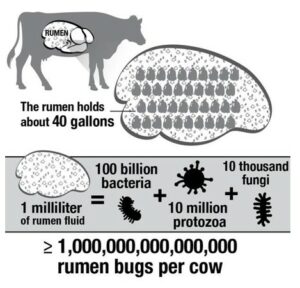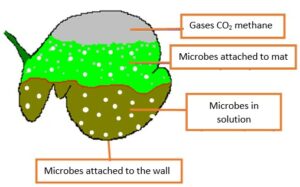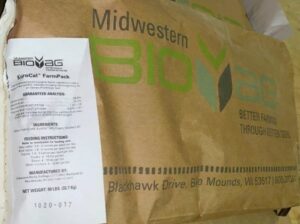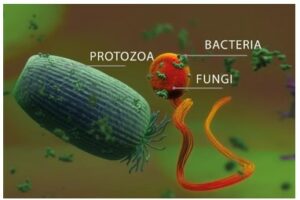Microbes in the Rumen


Microbes are very important to the rumen so it is very important that we keep the microbe population up. To keep these microbe populations up, the diet of the animal must be consistent. Microbes take time to recover and build up after sudden feed changes. Forage fiber-digesting microbes may take 4-6 weeks; starch (grain)-digesting microbes take 4-5 days; lactic acid-producing bacteria (from slug feeding) take 2-4 hours to build up. It’s also important to make sure the rumen environment is stable for the microbes to live. A favorable environment for rumen microbes includes: anaerobic (no oxygen), temperature near microbial optimum of 102oF, and pH around 5.5 to 6.8. When cattle drink the water, this helps maintain the rumen liquid environment, which supports microbe metabolism, and dilutes acids in the rumen.
Lastly, you also need to feed the rumen microbes. Most energy for microbes to grow and multiply are sourced from: starches (cereal grains), sugars (lush forages and molasses), and digestible fiber (forages, cottonseed hulls, and palm kernel extract). They also need protein, both true protein (protein meal and pastures) and non-protein nitrogen (urea) for growth and reproduction. They also need minerals such as, calcium, phosphorus, sulfur, and magnesium as they are essential to grow and multiply. You are not feeding the cow, you are feeding the microbes. The microbes feed the cow!

KuroCal™ FarmPack is a feed additive formulated to support gut health in all types of livestock. It contains a live source of naturally occurring microorganisms, which work to improve performance and feed intake. Supporting gut integrity helps producers avoid costly herd health challenges, and limits stress during times of transition and feeding program changes.
There is a minimum of 1.25 x 107 CFU/g (5.675 x 1010 CFU/lb) microbes in the KuroCal FarmPack. It includes Lactobacillus acidophilus, Lactobacillus casei, Enterococcus faecium and Bifidobacterium longum. It’s good for all types of ages of livestock and excellent for replacement calves. Establishing gut health early builds a strong foundation for future performance. KuroCal FarmPack promotes good gut health in young calves and supports productive rates of gain and growth. It is very important to improve gut integrity for better herd health and production.


